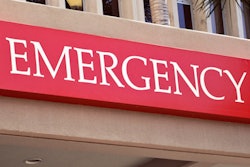
The rate of noninvasive diagnostic imaging use among patients with private insurance has stabilized since a peak in 2008, reflecting a comparable trend among Medicare patients, according to a study published in the current issue of Radiology.
The findings shed further light on the reality of imaging utilization in the U.S., addressing continued concern about overuse, wrote a team led by Dr. Arthur Hong of the University of Texas Southwestern Medical Center in Dallas. Including data from private payors in the analysis gives radiologists and policymakers a more accurate sense of imaging trends, since private payors tend to mirror Medicare (Radiology, February 2020, Vol. 294:2, pp. 342-350).
Concern about the use of diagnostic imaging has abounded for years, and policymakers have responded with vehicles like the Deficit Reduction Act of 2005 and code bundling measures established between 2009 and 2011 by the U.S. Centers for Medicare and Medicaid Services (CMS). These actions have had the intended effect of reducing imaging use, Hong and colleagues found in their research.
The team compared noninvasive imaging use rates between privately insured and Medicare patients, using information from Medicare claims databases between 2003 and 2016 and from 9 million commercially insured patients. Privately insured patients were divided into two age groups: 18 to 44 and 45 to 64. The group then calculated annual imaging use rates per 1,000 patients by modality (CT, MRI, nuclear imaging, echocardiography, ultrasound, and radiography).
All three of the population groups demonstrated growth in imaging use rates per 1,000 patients through the mid-2000s, peaked in 2008 or 2009, and then showed falling trends thereafter. By 2016, the decline in use rates had stabilized and use rates had become comparable to those in 2003 in both Medicare and privately insured patient populations.
| Imaging use rate trends by year, per 1,000 patients | |||
| Patient type and age group | 2003 | Peak use (year) | 2016 |
| Medicare patients | 3,873 | 4,422 (2008) | 3,410 |
| Commercially insured patients, 45 to 64 | 1,586 | 2,175 (2008) | 1,976 |
| Commercially insured patients, 18 to 44 | 868 | 1,188 (2009) | 982 |
The decreases in imaging use rates coincided with code-bundling Medicare established for CT, nuclear imaging, and echocardiography -- although after 2012, CT use did increase among both commercially insured and Medicare patients between the ages of 45 and 64, Hong and colleagues noted.
Not only does the study demonstrate that imaging use rates have decreased since peaking in 2008 and are now stable, it also illuminates data that has not been well-explored, the group concluded.
Additionally, the research may shed light on the efficacy of radiology benefits management as a cost-control measure, wrote Dr. Keith Hentel and Dr. Michael Wolk of Weill Cornell Medicine and New York-Presbyterian Hospital in New York City in an accompanying editorial.
"The lack of substantial difference in imaging utilization between these populations (including CT, PET, and MRI otherwise expected to require preauthorization) raises the question of the effectiveness of radiology benefits management to control non-Medicare utilization," they wrote. "This lack of effect on utilization trends further suggests that cost savings realized by payers through radiology benefits management are being achieved through alternate mechanisms, such as steerage to lower-cost providers and cost-shifting."




















